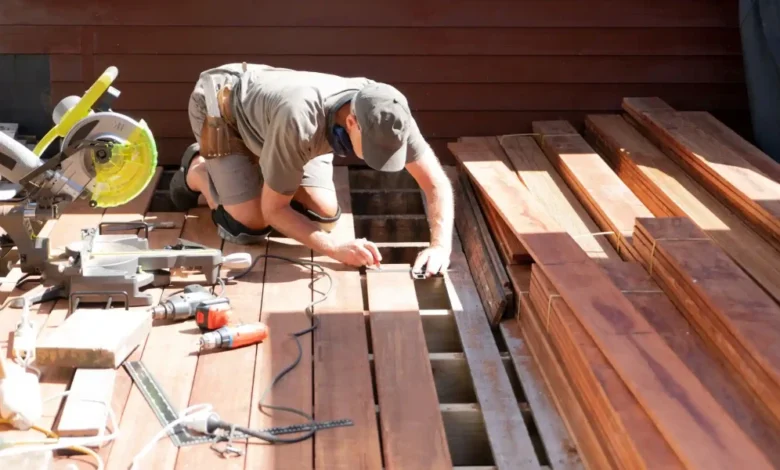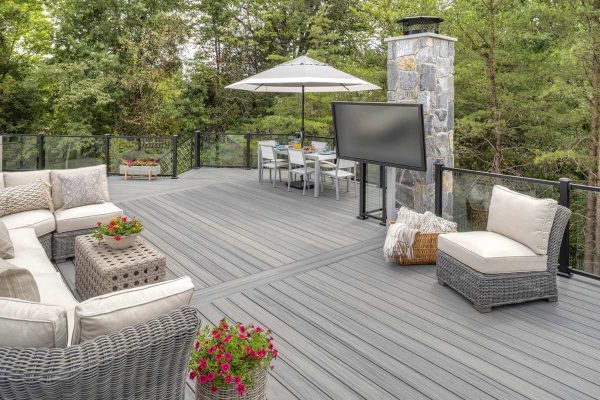5 Common deck resurfacing mistakes and how to avoid them

Deck resurfacing will greatly enhance your outdoor living space, but the process requires careful attention to detail. Understanding and avoiding common mistakes ensures a professional finish that lasts for years. Here’s a comprehensive guide to the most frequent errors and how to prevent them.
Inadequate surface preparation
The foundation of any successful deck resurfacing project lies in proper preparation. Many homeowners rush through this critical step, leading to premature finish failure and disappointing results. Adequate surface preparation involves thorough cleaning to remove dirt, mould, and mildew. Using a commercial deck cleaner helps break down surface contaminants and opens wood pores for better finish absorption. Skipping this crucial step prevents new finishes from properly adhering to the wood, ultimately leading to peeling, flaking, and uneven coverage.
Poor product selection
Understanding which products work best for your specific deck material is crucial. Different wood types and existing finishes require particular treatment approaches. Many homeowners choose products based solely on price rather than suitability, leading to premature failure. Wood species, sun exposure, humidity levels, and foot traffic all influence product selection. Testing products in inconspicuous areas helps ensure compatibility and desired results. Research manufacturer recommendations and choose products designed specifically for your deck’s wood type and environmental conditions.
Improper application techniques
Even quality deck refinishing products fail when applied incorrectly. Uneven coverage, excessive product application, and poor technique create visible flaws in the finished surface. Professional results require maintaining consistent coverage patterns, using thin coats, and following wood grain patterns during application. Working in manageable sections prevents lap marks and ensures uniform coverage. Start from the farthest corner and work toward an exit point to avoid walking on freshly treated surfaces.
Using incorrect products
Selecting inappropriate products for specific deck materials and conditions leads to disappointing results. Different wood types and existing finishes require particular treatment approaches. Testing products in inconspicuous areas helps ensure compatibility and desired results. Many homeowners choose products based on price rather than suitability, resulting in premature failure and the need for costly repairs.
Rushing between coats
Impatience during the refinishing process often leads to adhesion problems and surface imperfections. Each layer needs proper drying time before subsequent applications. Weather conditions affect drying times significantly, requiring flexibility in project scheduling. Rushing between coats can trap moisture beneath the surface, leading to bubbling, peeling, and eventual finish failure. Follow manufacturer recommendations for drying times and adjust based on local conditions.
Project preparation essentials
Before beginning any resurfacing work:
- Gather all necessary materials and tools.
- Remove furniture, planters, and decorations from the deck.
- Cover nearby landscaping and adjacent surfaces to protect them from cleaning solutions and finishing products.
- Inspect the entire deck for structural issues, loose boards, or protruding fasteners that need attention before resurfacing begins.
Timing your project
Choosing the right season for deck resurfacing significantly impacts results. Spring and fall typically offer ideal conditions with moderate temperatures and lower humidity. Plan projects during these seasons when weather patterns are more stable and predictable. Allow extra time in your schedule for unexpected weather delays or extended drying periods.
Professional application methods
Using proper application techniques ensures superior results. Apply products in thin, even coats using high-quality tools designed for deck finishing. Pay special attention to board ends, which absorb more product and require careful application to avoid excess buildup. Following these guidelines for deck refinishing ensures stunning, long-lasting results that elevate the beauty of your outdoor retreat.


